Funded Disease Team Projects
OIRM’s research program includes large, disease-based team grants, smaller New Ideas Grants to answer basic research questions and Post-doctoral Fellowships.
2019-2020 Disease Team Awardees:
A trial to improve wound healing using stem cells from patient’s own discarded burned tissue.
Investigator: Marc Jeschke
Institute: Sunnybrook Research Institute
Award Value: $450,000
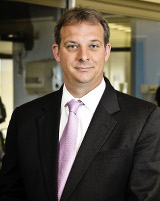 The single most important factor that determines survival of a burn patient is wound healing. This team recently isolated cells identified as burn-derived mesenchymal stem cells (BD-MSCs) from discarded burned skin. A skin substitute, Integra®-SC, was engineered by incorporating BD-MSCs into Integra®, a dermal matrix, and found beneficial results in both small and large animal models. In this study the team will conduct a first-in-humans clinical trial using Integra®-SC, developed from a patient’s own surgically removed burned tissue. It’s believed that Integra®-SC will facilitate and improve wound healing, heal faster, and, in the long-term, result in less scar formation. This approach also reduces the burden of surgeons needing to surgically remove a patient’s own good uninjured skin to use as a donor. This study will be conducted in stages followed by interim safety analyses. After safety analyses, the team will evaluate any needs or gaps in order to include recruitment of patients with a larger percent total body surface area burn. Integra®-SC has a broad clinical application and will impacts the larger burn community, patients with traumatic and complex wounds, and the stem cell research community. The clinical applicability of these results is promising and could create a new standard for the way we care for patients in the province of Ontario and world-wide.
The single most important factor that determines survival of a burn patient is wound healing. This team recently isolated cells identified as burn-derived mesenchymal stem cells (BD-MSCs) from discarded burned skin. A skin substitute, Integra®-SC, was engineered by incorporating BD-MSCs into Integra®, a dermal matrix, and found beneficial results in both small and large animal models. In this study the team will conduct a first-in-humans clinical trial using Integra®-SC, developed from a patient’s own surgically removed burned tissue. It’s believed that Integra®-SC will facilitate and improve wound healing, heal faster, and, in the long-term, result in less scar formation. This approach also reduces the burden of surgeons needing to surgically remove a patient’s own good uninjured skin to use as a donor. This study will be conducted in stages followed by interim safety analyses. After safety analyses, the team will evaluate any needs or gaps in order to include recruitment of patients with a larger percent total body surface area burn. Integra®-SC has a broad clinical application and will impacts the larger burn community, patients with traumatic and complex wounds, and the stem cell research community. The clinical applicability of these results is promising and could create a new standard for the way we care for patients in the province of Ontario and world-wide.
Towards a cell therapy application using pluripotent stem cell-derived heart muscle cells to regenerate injured hearts.
Investigator: Michael Laflamme
Institute: University Health Network
Co-investigators:
Graham Wright, Sunnybrook Research Institute
Gordon Keller, University Health Network
Ren-Ke Li, University Health Network
Terrence Yau, University Health Network
Award Value: $450,000
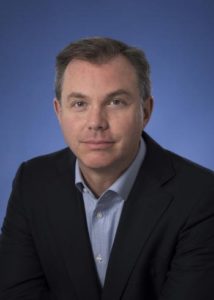
After myocardial infarction (heart attack), the heart muscle lost is replaced by non-contractile scar tissue, often initiating progressive heart failure. The current options for treating post-infarct heart failure are limited, and this remains a disease with high morbidity, mortality and societal costs. The ability to “remuscularize” the infarct zone by transplanting cardiomyocytes (heart muscle cells) derived from human pluripotent stem cells (hPSCs) represents a potentially revolutionary new therapy for patients suffering from this disease. The team has successfully translated protocols for the cardiogenic differentiation of hPSCs from the lab bench to large-scale production, and are now able to routinely generate hPSC-derived cardiomyocytes in batches of >1×109 cells. In addition, the team has improved protocols that guide the differentiation of hPSCs into specialized cardiac subtypes, including the ventricular cardiomyocytes that are needed for infarct repair, and have recently partnered with a new Toronto-based biotechnology company, BlueRock Therapeutics, that will further upscale and help commercialize these technologies. This project builds on these advances and tackles critical next steps including proof-of-concept work to determine if the transplantation of hPSC-derived ventricular myocytes can remuscularize the infarct scar and improve contractile function in well-validated models of post-infarct heart failure. The latter study will thoroughly test the safety and efficacy of this novel cell therapy using endpoints including histology (host and graft tissue structure), MRI (contractile function), as well as ECG recording and mapping studies (electrical function). With the successful completion of this preclinical work, the team hopes to launch an Ontario-based, first-in-humans trial of hPSC-derived ventricular myocytes as a cell-based therapy for heart failure.
Stimulating muscle repair for muscular dystrophy
Investigator: Michael A. Rudnicki
Institute: Ottawa Hospital Research Institute
Co-investigators:
Penney Gilbert, University of Toronto
Patrick Gunning, University of Toronto
William Stanford, Ottawa Hospital Research Institute
Jodi Chardon, The Ottawa Hospital
Hugh McMillian, Children’s Hospital of Eastern Ontario
Award Value: $300,000

Duchenne muscular dystrophy (DMD) is a devastating genetic disease that effects 1 in 3,500 boys that is characterized by progressive muscle wasting and premature death in the second or third decade of life. No effective cure-based therapy exists for DMD. This multidisciplinary team is implementing innovative therapeutic approaches for treating DMD patients to extend physical mobility and enhance quality of life by stimulating skeletal muscle regeneration using small molecule drugs. Previous studies have identified a panel of small molecule drugs that that have identified target pathways that can be modulated to ameliorate the regenerative defect in DMD muscle stem cells. Candidate drugs will be tested on dystrophic models and pathways validated in human muscle stem cells to identify the best candidates to advance towards the clinic. The team expects that these drugs could be combined with other therapies, such as exon skipping or gene therapy, to provide a synergistic approach to treatment. Utilizing rigorous preclinical and clinical trial methodology design will support a pathway to first-in-human clinical studies. The project is partnered with Satellos Bioscience Inc.
INCuBATOR: New Cell Treatments for Lung Injury in Babies – Getting research faster and safer into patients
Investigator: Bernard Thébaud
Institute: Ottawa Hospital Research Institute
Co-investigators:
Dean Fergusson, Ottawa Hospital Research Institute
Justin Presseau, Ottawa Hospital Research Institute
Kednapa Thavorn, Ottawa Hospital Research Institute
Award Value: $300,000
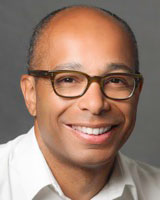
Extreme prematurity is the main cause of mortality and morbidity in children before five years of age. The most severe complication is bronchopulmonary dysplasia (BPD), a chronic lung disease that follows ventilator and oxygen treatment for acute failure to breathe. BPD also adversely affects the brain and leads to blindness. Currently, there is no treatment for BPD. Because these injuries occur in developing organs, consequences are life-long and carry a high economic burden. Thus, effective interventions at this stage of life provide exceptional value. This team has shown that umbilical cord-derived mesenchymal stromal cells (UC-MSC) repair lung injury in neonatal rodents modelling BPD. UC has numerous advantages over bone marrow as a source of MSCs, especially for newborn disease. As it is easy to obtain after birth without harming mother or baby; cells have higher MSC yield and expansion potential as well as higher repair capabilities. The team has developed a highly efficient, closed and fully-automated system that yields high numbers of low passage, GMP manufactured clinical grade UC-MSCs. The INCuBATOR approach will expedite the process of bringing this promising cell therapy into patients through a multi-disciplinary, rigorous and efficient process that will mitigate the potential high-risk nature of cell therapy in newborns. This is supported through unprecedented access to a large animal model, that mimics the human disease to test the safety, efficacy and immune response of UC-MSC. Rigorous analyses (systematic reviews) of all studies testing MSCs in animal models of BPD and of clinical studies testing MSCs in preterm infants will help to inform preclinical and clinical design, leading to the delivery of a Phase I study protocol to test the feasibility and safety of UC-MSCs in preterm infants at risk of developing BPD .
Cell transplantation to preserve central vision
Investigator: Valerie Wallace
Institute: University Health Network
Co-investigators:
Andras Nagy, Lunenfeld-Tanenbaum Research Institute
Carol Schuurmans, SunnyBrook Research Institute
Molly Shoichet, University of Toronto
Derek van der Kooy, University of Toronto
Award Value: $300,000
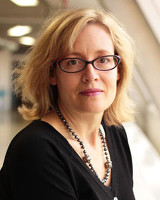
Late stage retinitis pigmentosa (RP) and age‐related macular degeneration (AMD) are degenerative diseases that rob patients of central high acuity vision. The multiple underlying etiologies of these diseases ultimately converge on the loss of light sensitive cone photoreceptors in the central macular region of the retina, resulting in central vision loss. To date, there are few experimental treatments that preserve cone photoreceptor function and survival. Based on clinical trial results, neurotrophic factor delivery is not therapeutically beneficial, prompting the need to develop alternate neuroprotective approaches. Rod photoreceptors and RPE are essential for the survival and function of cone photoreceptors and, therefore, this study will exploit the paracrine effects of these cells to promote cone survival. To maximize the paracrine effects of rods and RPE this study will use combinatorial cell therapy to preserve cones in animal models of secondary cone degeneration, an approach that will be generally applicable to the maintenance of central vision in late stage RP and AMD. The team will develop an optimized procedure for the efficient induction and enrichment of human rod photoreceptors and RPE from stem cells and fibroblasts using small molecules and transcription factor reprogramming strategies, develop and test novel biomaterials enhanced with photoreceptor survival factors, compare the survival and functional engraftment potential of single and combinatorial rod/RPE delivery on cone survival and function in animal models of late stage RP, and provide solutions for cell therapy safety and allograft immune tolerance.
Cellular immunotherapy for septic shock (CISS): Research to move stem cells through the clinical pipeline
Investigator: Lauralyn McIntyre
Institute: Ottawa Hospital Research Institute
Co-investigators:
Shirley Mei, Ottawa Hospital Research Institute
Kednapa Thavorn, Ottawa Hospital Research Institute
Claudia dos Santos, St. Michael’s Hospital
Jason Acker, Canadian Blood Services
Dean Fergusson, Ottawa Hospital Research Institute
Award Value: $200,000
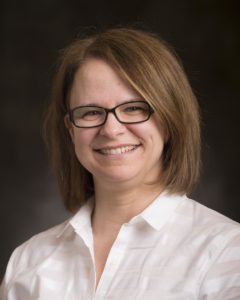
Septic shock is a devastating illness and the most severe form of infection seen in the intensive care unit (ICU). Approximately 20 – 40% of those with septic shock will die and survivors suffer significant long-term impairment in function and reduced quality of life. Despite decades of research examining different therapies, none has proven successful and supportive care remains the mainstay of therapy, at a cost of approximately $4B in Canada annually. Mesenchymal stem cells (MSCs) represent a novel treatment, and have been shown to modulate the immune system, increase clearance of bacterial pathogens, restore organ function, and reduce death in preclinical models. Over the last seven years, this multi-disciplinary team has taken the lead to develop a research program studying MSCs in septic shock, and was the first in the world to have conducted and completed a Phase I clinical trial that evaluated MSCs in patients with septic shock. This trial established that MSCs appear safe and that a randomized controlled trial is feasible. Based on these results, we are now moving to a larger clinical trial at several academic hospitals across Ontario and Canada. This Phase II RCT (CISS2) will continue to evaluate safety, assess if there are strong signals for clinical benefit, and examine mechanisms and biological effects of MSCs. An economic analysis will also determine if the treatment is co
st effective. This team continues to optimize protocols for cryopreservation of MSC products, identify bio-signatures tailored to septic shock to further identify potent cells, and to develop MSC modifications to further improve their performance characteristics for evaluation in future septic shock clinical trials.
Stem cell approaches to repairing damaged white matter in the brain of children and teenagers
Investigator: E. Ann Yeh
Institute: The Hospital for Sick Children
Co-investigators:
Freda Miller, The Hospital for Sick Children
Donald Mabbott, The Hospital for Sick Children
Paul Frankland, The Hospital for Sick Children
David Kaplan, The Hospital for Sick Children
Cindi Morshead, University of Toronto
Douglas Munoz, Queen’s University
Jing Wang, Ottawa Hospital Research Institute
Award Value: $200,000
 Damage to the white matter of the brain occurs following injury and in disorders like multiple sclerosis. This results in sensory, motor, and cognitive problems. Currently, there are no effective medical therapies to promote brain repair and reduce disability following white matter damage. This project looks at enhancing the genesis of new oligodendrocytes (the cells that make myelin) and in doing so, promote white matter repair. Taking advantage of the fact that our brains contain resident precursor cells that normally make oligodendrocytes throughout life, the team will ask whether endogenous precursors can be pharmacologically activated to promote repair. Excitingly, this team has discovered that a widely-used and safe drug, metformin, will enhance the genesis of oligodendrocytes from neural precursors and that, following pediatric neural injury, this promotes neuroanatomical and functional recovery. This work will now be translated to the clinic. The team is pursuing a pilot clinical trial of metformin for pediatric demyelinating disease using outcome measures recently developed. Positive results from this clinical trial will lead to a dramatic shift in how we treat children/teenagers with white matter injury, and will pave the way for future additional clinical trials in children and adults with white matter damage.
Damage to the white matter of the brain occurs following injury and in disorders like multiple sclerosis. This results in sensory, motor, and cognitive problems. Currently, there are no effective medical therapies to promote brain repair and reduce disability following white matter damage. This project looks at enhancing the genesis of new oligodendrocytes (the cells that make myelin) and in doing so, promote white matter repair. Taking advantage of the fact that our brains contain resident precursor cells that normally make oligodendrocytes throughout life, the team will ask whether endogenous precursors can be pharmacologically activated to promote repair. Excitingly, this team has discovered that a widely-used and safe drug, metformin, will enhance the genesis of oligodendrocytes from neural precursors and that, following pediatric neural injury, this promotes neuroanatomical and functional recovery. This work will now be translated to the clinic. The team is pursuing a pilot clinical trial of metformin for pediatric demyelinating disease using outcome measures recently developed. Positive results from this clinical trial will lead to a dramatic shift in how we treat children/teenagers with white matter injury, and will pave the way for future additional clinical trials in children and adults with white matter damage.
Past Awardees:
- A stem cell approach to regenerate the injured spinal cord ($400,000) Project Leader: Michael Fehlings (University Health Network)
- Cellular Immunotherapy for Septic Shock ($400,000) Project Leader: Duncan Stewart (Ottawa Hospital Research Institute)
- Towards a cell therapy application for using pluripotent stem cell-derived cardiomyocytes to treat cardiovascular disease ($250,000) Project Leader: Gordon Keller (University Health Network) –
- Cone photoreceptor derivation and transplantation – an innovative approach for the treatment of age-related macular regeneration ($250,000) Project Leader: Valerie Wallace (University Health Network) –
- Application of novel stem cell derived human non-monocytic dendritic cell precursors (hNM-DCPs) for immunotherapies ($250,000) Project Leader: Mick Bhatia (McMaster University)
- Preclinical evaluation of a bioengineered human islet ($100,000) Project Leader: Cristina Nostro (University Health Network)
- Overcoming central vision loss with stem cell therapy and rehabilitation ($100,000) Project Leader: Valerie Wallace (University Health Network
- Pluripotent and cord blood derived progenitor t-cells for immune reconstitution therapy ($100,000) Project Leader: JC Zuniga-Pflucker (Sunnybrook Research Institute)
